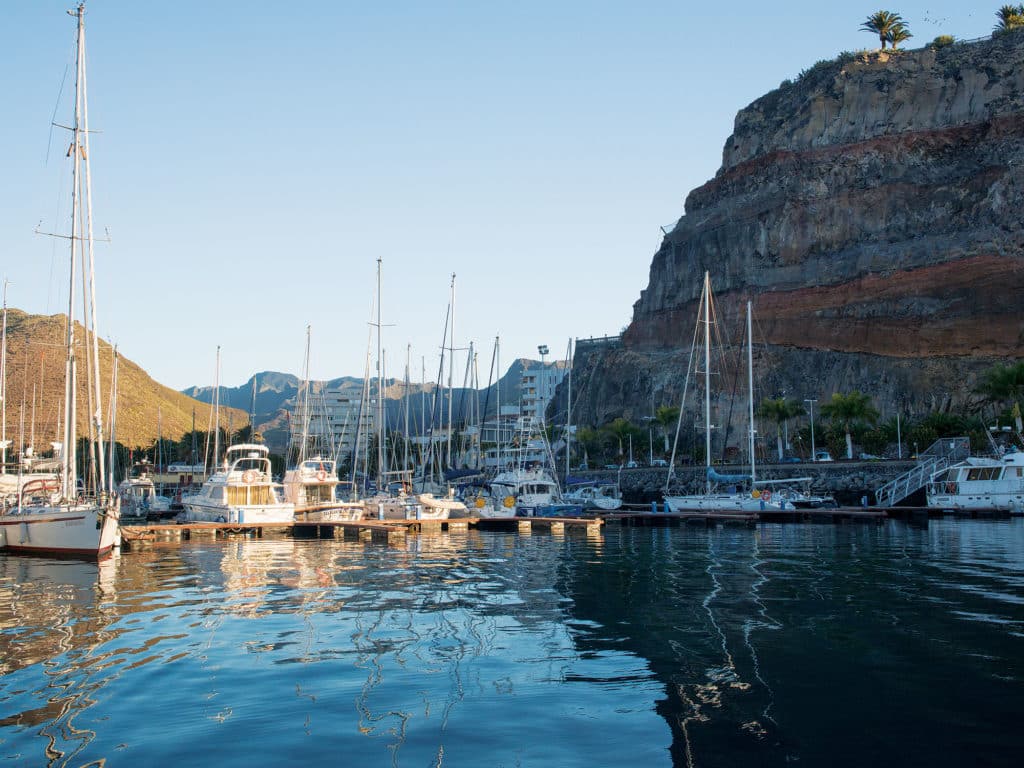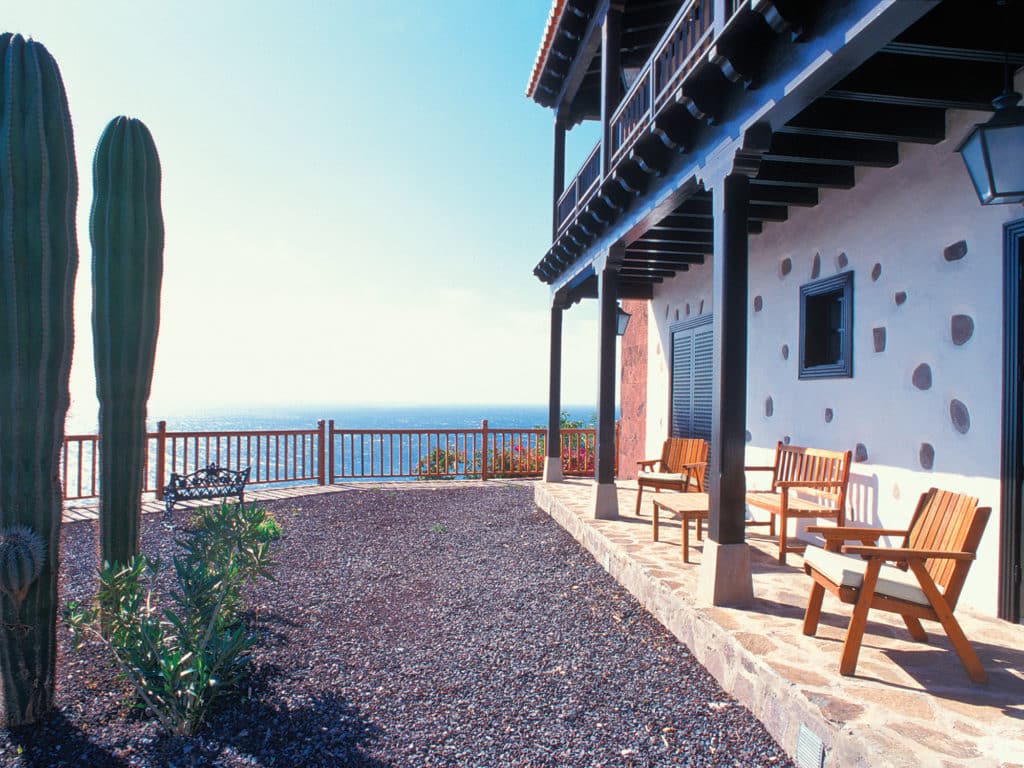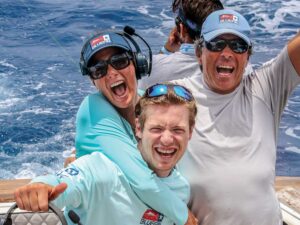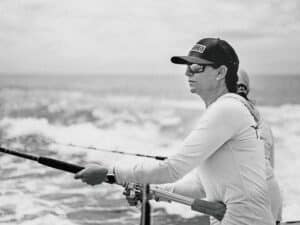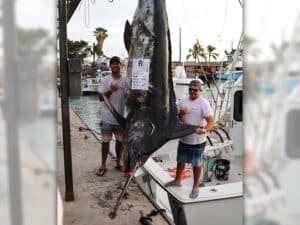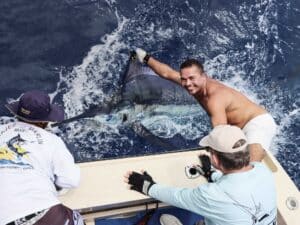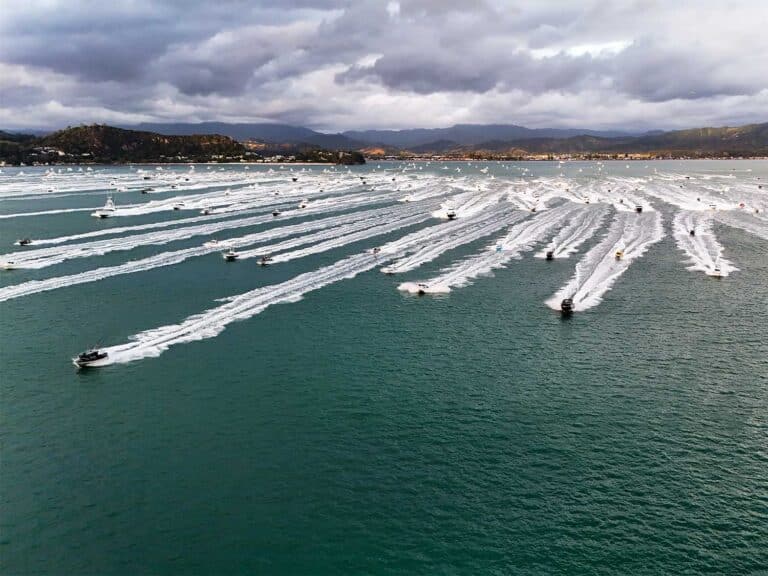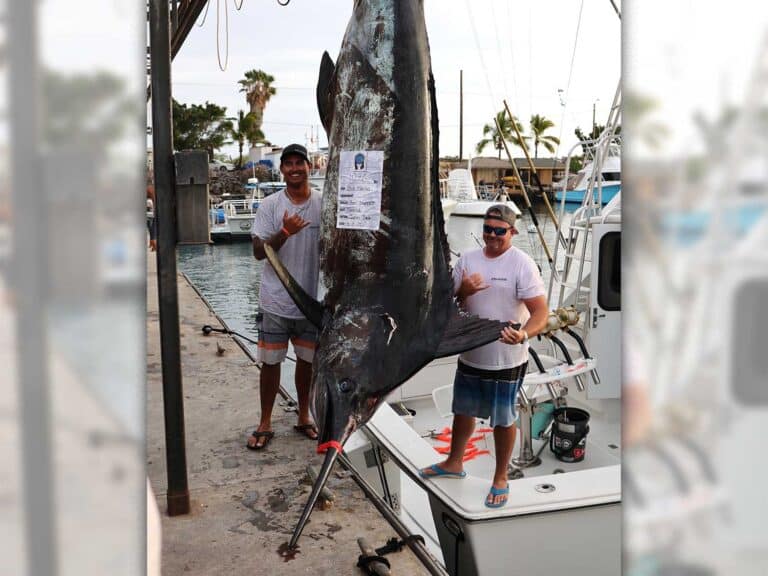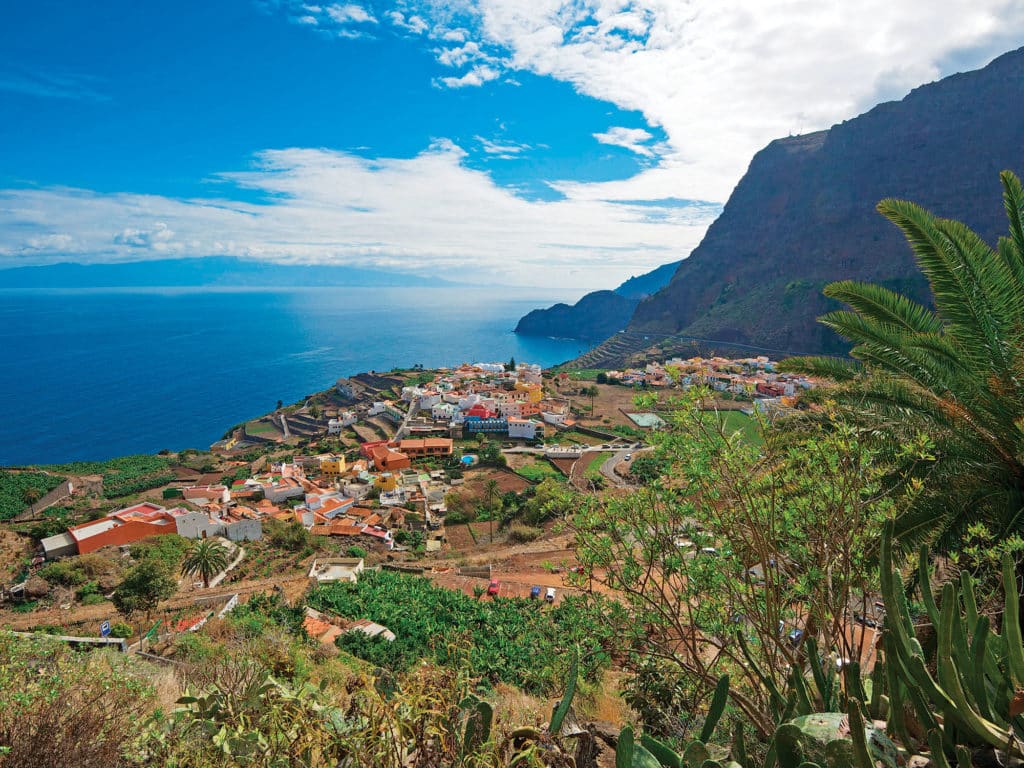
Situated off the west coast of Africa, the Canary Islands are a chain of seven islands that have long been tied to world shipping and trade. Most famously connected to Christopher Columbus, La Gomera was used by the famous explorer as his jumping-off point after loading up with supplies and water on his first and subsequent voyages of discovery to the New World. Since then, the Canaries have had a Spanish influence, remaining a territory of Spain to this day.
The islands are some 800 nautical miles north of Cape Verde and 250 nautical miles south of Madeira, which is certainly in the migratory path for not only large numbers of big blue and white marlin, but a spring migration of giant bluefin tuna — a budding and prolific recreational fishery for the islands, especially at La Gomera.
Gran Canaria, Tenerife and La Gomera are in the center; Lanzarote and Fuerteventura are the easternmost islands; and La Palma and El Hierro are the westernmost islands of the Canary chain. Like all island chains, each has its own feel and specialty. In the Canaries, the crown jewel for sport fishing is La Gomera. Two blue marlin line-class records from Gomera still stand today: The 6-pound men’s record is held by Gary Carter, with his 357-pounder caught on June 4, 2008, and the 8-pound men’s record belongs to Stewart Campbell, thanks to a marlin caught six years earlier to the day on June 4, 2002, weighing 562 pounds.
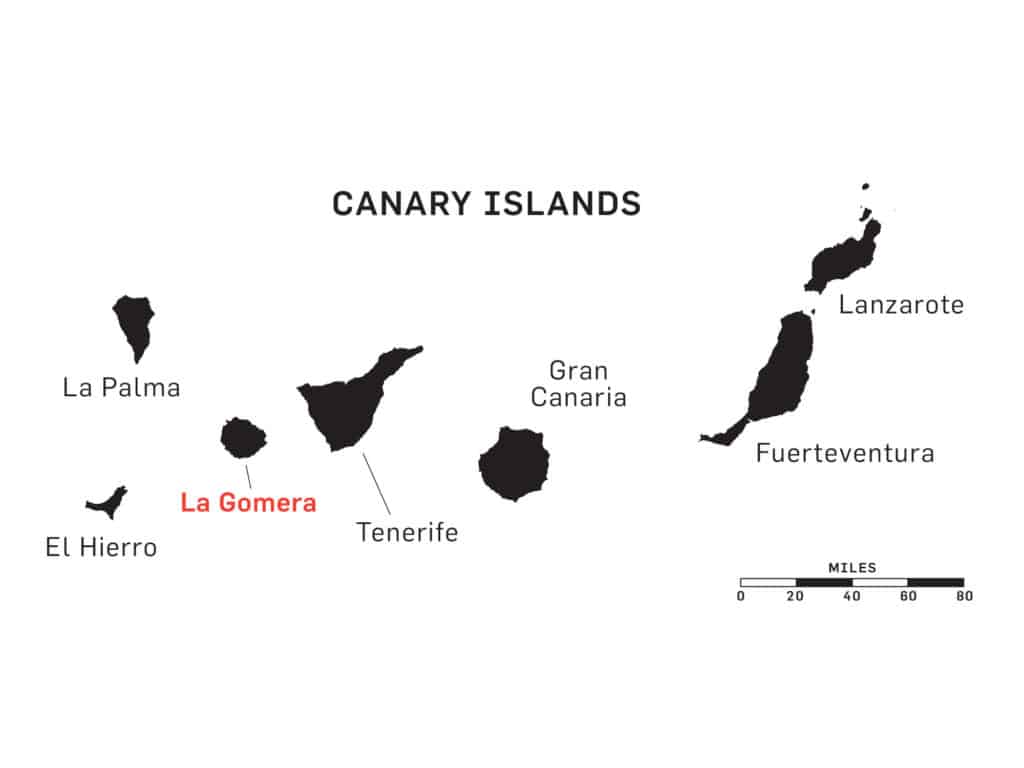
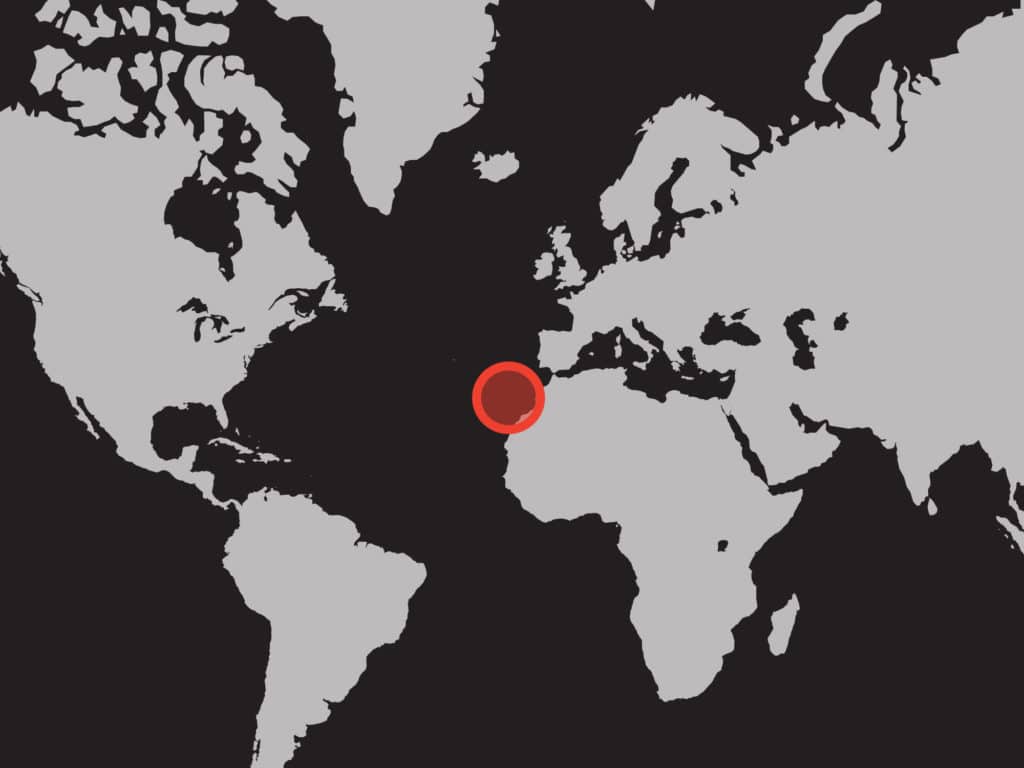
First Fishing Exploration
Back in 1994, Capt. James Roberts with his 40-foot Gamefisherman French Look and their mothership were fishing off La Graciosa in the Canaries, just north of Lanzarote. They had fished five days and had seen only one fish when locals Manolo Ramirez and Billy Denahey told Roberts of the fishing off La Gomera.
According to Roberts’ logbook: “We arrived July 21, in the lee of Gomera at 1400 hours and went alongside the mothership to get Jean Paul Richard and started fishing there, we went three for eight. By the 24th we had seen 24 fish and started light-tackle fishing. We anchored just east of the harbor of Valle Gran Rey. In the next five days we see 23 fish, breaking off nine and pulling hooks on two. During this time we had two fights on different days that prevented us from fishing, one was five hours and the other was eight-and-a-half hours. The next six days fishing slowed. On the 30th we saw five and it went down from there, [so we] departed for Madeira August 11th with the Gamefisherman on the back deck.” Roberts had asked Ramirez and Denahey to come visit with their boats, and they did.
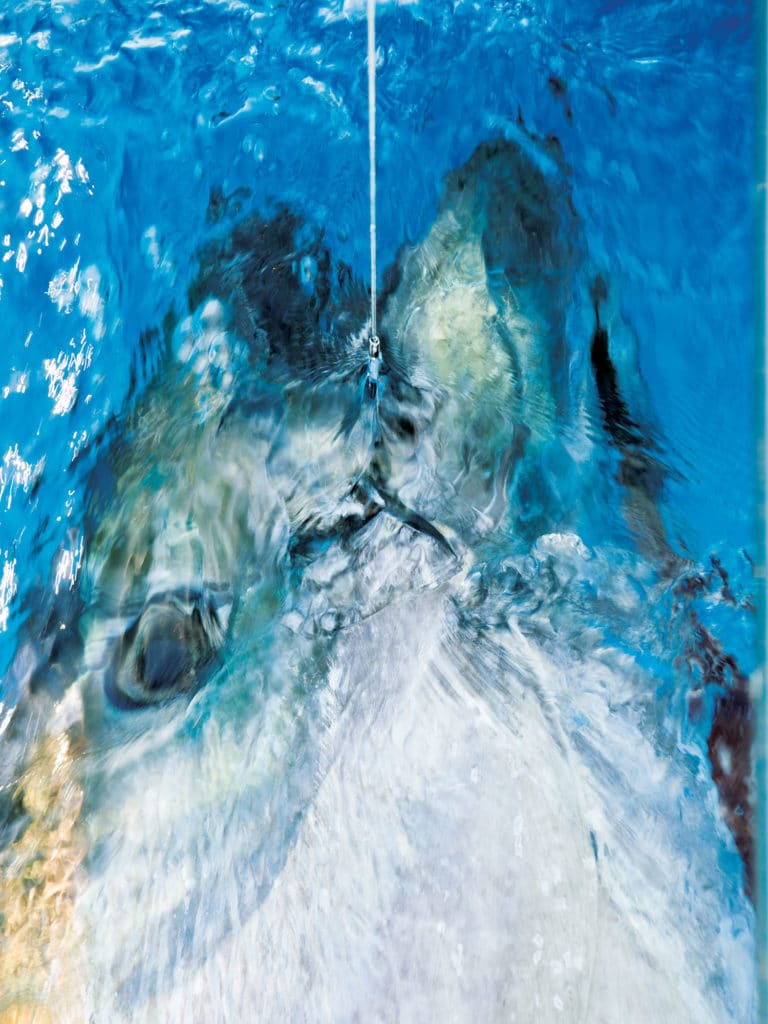
This edge wraps around the island on both the southeast and southwest corners, so depending on wind direction, there is a good deal of ground to cover without getting into the rougher water of the wind acceleration zones. In these zones, the wind hits the island and wraps around it as it accelerates due to the height of the mountains and the size of the islands. During several of our fishing trips this past April, we saw acres of suspended bait from the edge into 90 feet. Birds patrolled the grounds, and porpoise balled the bait frequently, offering an amazing scene of sea life often bursting with whales and tuna.
With the prevalent trade winds of summer coming from the northeast and creating wind acceleration zones on either side of the island, conditions can get incredibly nasty. The good news is that the best fishing is on the southern end of the island in the lee of the wind, making for mostly calm fishing close to the marina. Fishing in the shadow of the islands’ mountains and valleys creates a picturesque backdrop for this great fishery, with Tenerife’s big volcanic peak, Teide, often in sight off in the distance to the east. The baitfish, such as trumpeteiro, boarfish and mackerel, that attract the game fish get stacked up on the southern end of the island during the summer and make a fertile feeding ground for visiting pelagics.
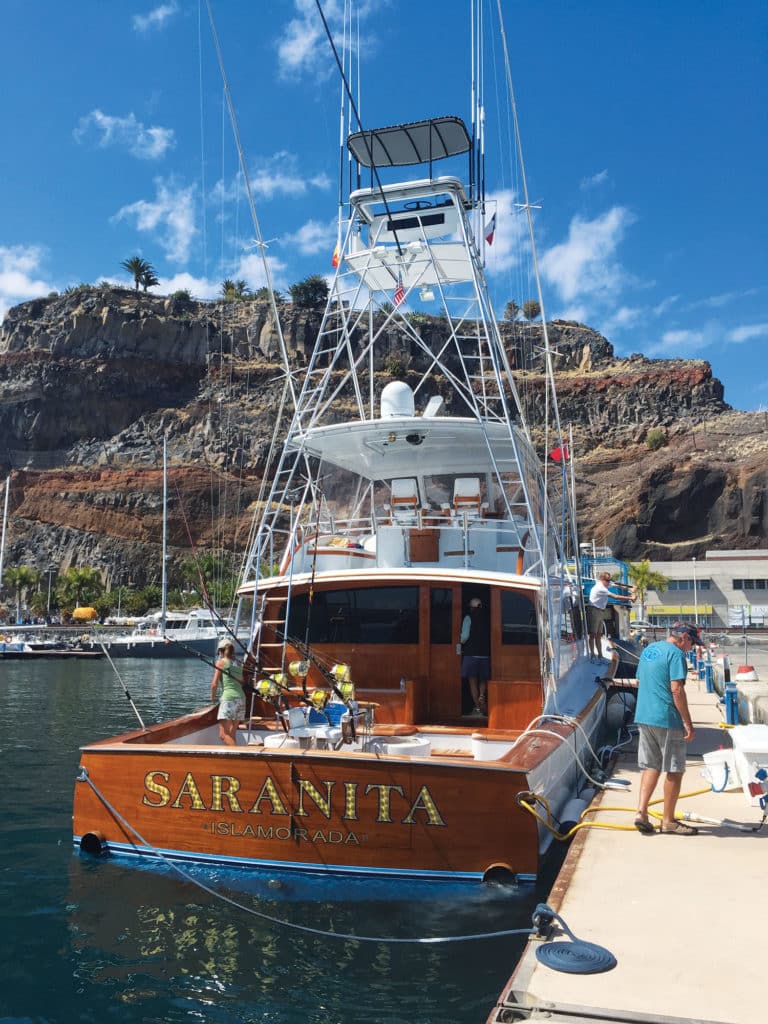
A Journey of Our Own
Knowing the rich history of La Gomera, we planned a trip this spring to Gran Canaria to try out some of the giant bluefin fishing during March and April in La Gomera before heading north to Madeira for the summer. I enlisted my old friend, Capt. Bark Garnsey, to come along for another shot at the eastern Atlantic for a couple months, something we had been talking about for several years. Back in 2006, I shipped Brier Patch and Garnsey shipped Campbell’s Chunda to the eastern Atlantic to fish Madeira, where we enjoyed a great fishing season. With things potentially looking good for the summer of 2016, we went to work to get a boat to the eastern Atlantic. Enlisting the help of Sevenstar Yacht Transport, we shipped the 63-foot Merritt Saranita and made the transit to La Gomera in mid-April, setting up camp for what we hoped to be an incredible trip.
The giant bluefin season is an emerging and interesting fishery. These are not mediums — they are true giants migrating north toward the Mediterranean or Scotland, Norway or even Canada en route to their summer feeding grounds. The large schools of mackerel and smaller baitfish attract the giants and create opportunities for sport fishermen to present baits to the bluefin. We used gyro binoculars and radar to find birds on the schooling fish. As we moved from school to school, we noted great shoals of bait and regularly marked giant tuna around them.
We had our shots at the giant bluefin off La Gomera using 130s and fun-fished by ourselves for a couple days before owners Charles and Leslie Duncan arrived to try their hand at heavy-tackle fishing at the end of April. The Duncans are accomplished fly and light-tackle anglers, so fishing the chair was a neat experience for them. After Charles’ first tuna, the weather changed and the fish moved off, so we transitioned into blue marlin fishing. But our timing was too early for the blues, and we tried for two days with no bites. We were greatly disappointed they missed the heart of the excellent tuna bite earlier in the month, but we enjoyed the time there immensely.
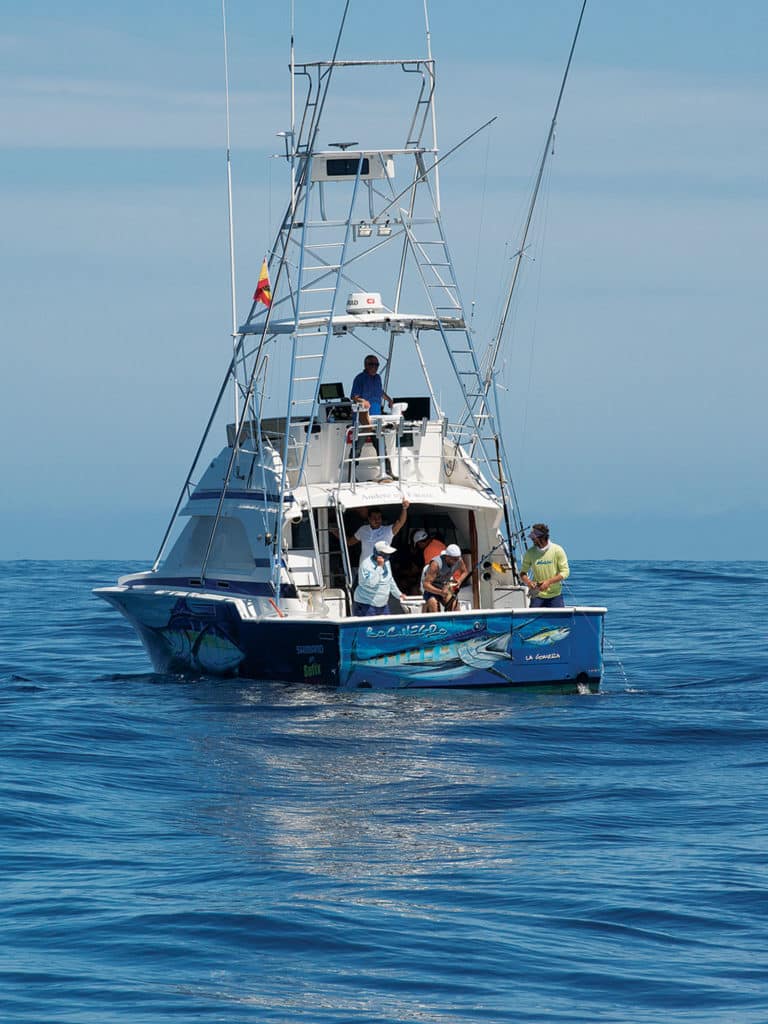
The Destination
The quaint, historic little town of San Sebastian de La Gomera is set along the sea, with houses and small commercial buildings rising up into the mountainside bowl surrounding it. San Sebastian has a typical town square, around which are many cafes with excellent food and cozy shops with practically everything you might or might not need. The church where Columbus prayed prior to his voyages is still there. It is also rumored that the well providing the water for the voyages is there, and locals claim that the Americas were consecrated with this water.
Marina de La Gomera features nice floating docks as well as a fuel dock. However, there is little space for visiting boats because many Europeans use the Canaries as their winter and summer playground, keeping the marina full. Anything larger than 65 feet is a stretch and relegated to laying side-to in one of two spaces; the regular slips are for boats up to 45 feet. On a southerly wind, there is a good bit of surge, but when the winter fronts come from the north and the summer trades blow, the marina is well-protected.
The run to the fishing grounds from the marina is very short, and outriggers are frequently laid out upon clearing the harbor. A run 10 miles or more is considered a long way off La Gomera. Like most volcanic islands, the drop-off is close to the island and within a quarter-mile at times. This bathymetry creates a good roll off that makes for a great edge to fish.
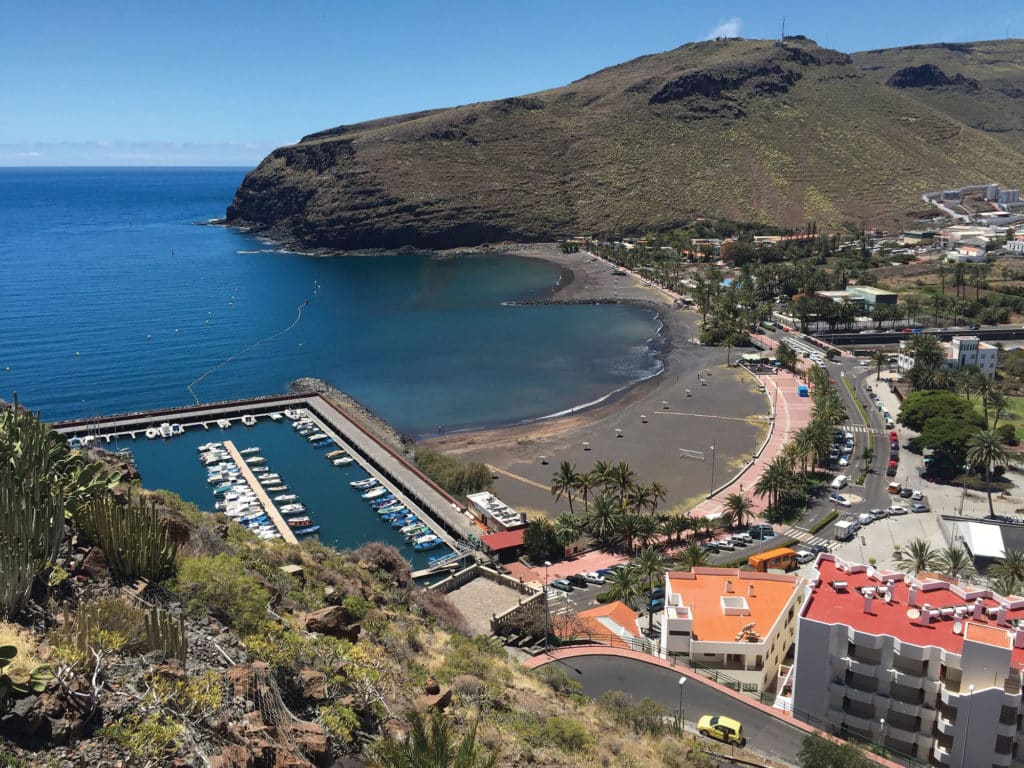
The Local Veteran
Capt. Jason Pipe is an Englishman who runs charters aboard his 37-foot Bertram, Bocinegro, out of the marina. He specializes in heavy-tackle fishing for the giant bluefin from mid-March to early May, then transitions into the summer blue marlin season through September and into October. Fully equipped with good electronics and tackle, Pipe has fished many successful seasons in Gomera. As he puts it: “I’ve fished all the other islands in the eastern Atlantic; I choose to fish out of Gomera.”
The many reasons why he likes it here are obvious: The island is beautiful and clean, the people are friendly, there are nice places to stay and guests have access to good food at several of the local restaurants. The best part is that it is very close to some incredible fishing action — there aren’t any long canyon runs here. During the giant bluefin season, Pipe averages a fish or better per day. He has similar or better results during the marlin season, but the difference compared to other blue marlin fishing grounds in the western Atlantic is that the marlin off La Gomera average 350 to 800 pounds. Many fish are even larger, and he has shots at the occasional fish near or over the 1,000-pound mark each season.
Like most big blue marlin fishing locations, lures are the optimum method in summer, with some boats bait-and-switch fishing. Due to the possibility of catching the fish of a lifetime, 130- and 80-pound tackle are used by most boats on a daily basis to catch fish within a reasonable amount of time and with less chance of stressing them. Pipe uses a mackerel bait when switch-baiting on lighter tackle if his clients have the skills and are inclined to do so. He’s an enthusiastic skipper with keen eyes and a cerebral approach to everything he does. Combine that with his top-notch crew and good tackle, and you can bet Pipe and his team aboard Bocinegro are very busy throughout the season.
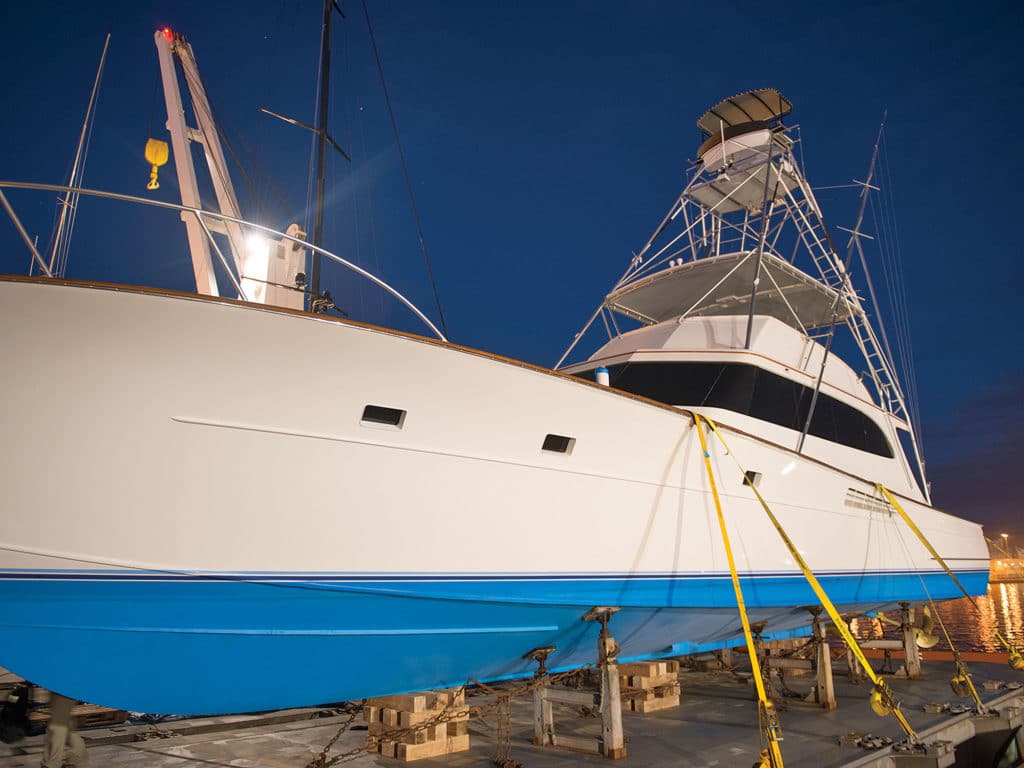
A Worthwhile destination
Getting there is a bit of a mission, but there are two airports on Tenerife (one in the north and the other on the south end of the island), with daily flights from Madrid, London and several other mainland Europe airports. On Tenerife, two ferry services — the Fred Olsen high speed and Armas ferry — transit the channel to La Gomera in 45 to 60 minutes, dropping you off at the commercial dock next to the marina.
There are several options for local hotels. Pipe also offers an apartment rental with his charters should you like to be more of a local and hang right in the center of town. The Hotel Parador is set on the cliff overlooking the harbor and is quite nice, with only a five-minute cab ride up the mountain. If you need something a bit more upscale, the Hotel Jardin Tecina is a luxury resort with spacious rooms, a large swimming pool surrounded by expansive decks overlooking the ocean and a golf course. Hotel Tecina is a 30-minute cab ride through the scenic mountains to the marina. However, if the weather is good, you can arrange with Pipe to be picked up by the boat each morning at the wharf below the resort — a short five-minute ride by cab.
La Gomera is a sleepy little island with big blue marlin, white marlin, yellowfin tuna, bigeye tuna and bluefin tuna in its midst. It’s a lovely place to hang out, boasting a great climate, and the fishing is remarkably close in virtually calm water. So if you’re looking for your next adventure in the eastern Atlantic, with opportunities to catch both large marlin and giant tuna, you should add La Gomera to the top of your list.
